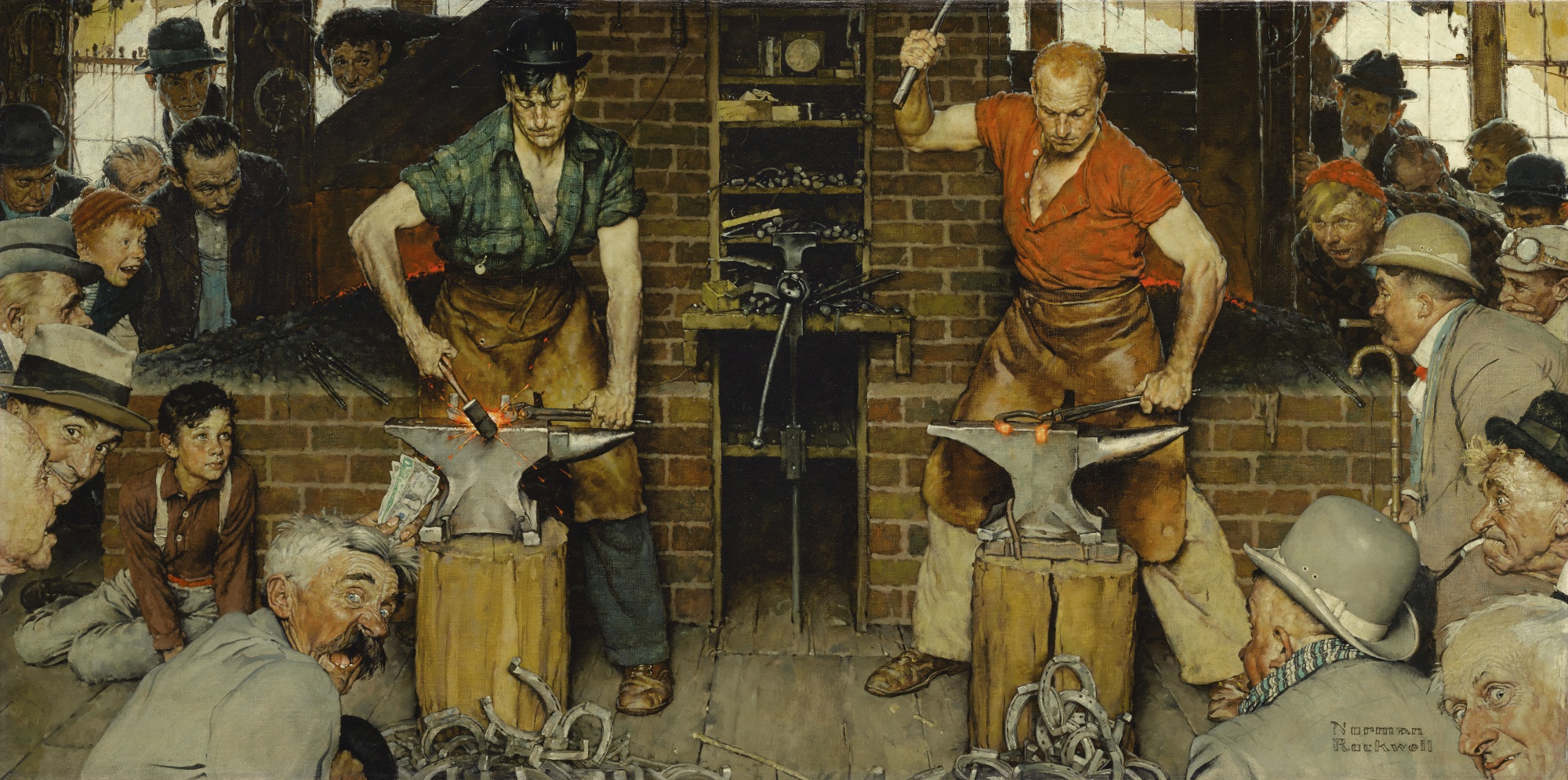
Despite another—albeit low-key—protest outside Sotheby’s this morning, the sale of selected works from the Berkshire Museum of Art collection continued apace on Wednesday. Critics gathered with signs in front of Sotheby’s at 9 a.m.—an hour ahead of the auction house’s major American art sale—but it didn’t keep the auctioneer from putting the final four works from a group of 13 under the hammer.
Three of the four works found buyers. The overall total of $8.6 million, however, fell well short of pre-sale estimates of $12.4 million to $17.6 million. That discrepancy was largely due to the failure of one multimillion-dollar lot: Frederic Edwin Church’s pastoral scene, Valley of Santa Isabel, New Granada (1875), estimated at $5 million to $7 million, did not sell. (Many of the Berkshire works underperformed estimates, and of the 13 offered so far, two have now failed to sell.)
The star lot of today’s auction was Norman Rockwell’s Blacksmith’s Boy, Heel and Toe (1940), which sold for $8.1 million compared with an estimate of $7 million to $10 million. (Final prices, unless noted, include premiums; pre-sale estimates do not.) A still-life by John La Farge, Magnolia (1860), sold for $262,500 against an estimate of $200,000 to $300,000, and a portrait of George Washington by Rembrandt Peale sold for $225,000 on an estimate of $200,000 to $300,000.
So far, the 11 artworks sold have yielded a total of just over $15 million, though the buyers’ premium accounts for a portion of that figure. The net total is closer to $13 million, which the museum confirmed in a statement following the American art sale today.
“These auctions move the Berkshire Museum important steps forward by providing resources needed to secure the museum’s future,” Elizabeth McGraw, president of the museum’s board of trustees, wrote in an emailed statement. “With the close of today’s auction, the Berkshire Museum will realize net proceeds of approximately $42 million, including the private sale of Shuffleton’s Barbershop.” The most expensive of the Berkshire lots on offer, Norman Rockwell’s barbershop scene was snapped up by Star Wars producer George Lucas’s new private museum, under construction now in Los Angeles.
“Considering the unpredictable nature of the art market, we are disappointed but not surprised to fall short of our expected goal by close to $13 million,” McGraw said. The agreement with the Attorney General allowed for the sale of up to 40 works to reach $55 million. “We will take time now to consider how we will proceed, through possible auction and private sale, to gain the additional resources needed.”
Protesters outside Sotheby’s ahead of this morning’s American Art sale, which included works being deaccessioned from the Berkshire Museum. Image courtesy of Save the Art—Save the Museum
As for the protesters at Wednesday’s sale, the Massachusetts-based group called Save the Art–Save the Museum also turned up outside the Upper East Side auction house on the evening of Monday, May 14, ahead of the Impressionist and Modern sale. There, two works including paintings by Henry Moore and Francis Picabia sold for $1.4 million, compared with an overall estimate of $1.2 million to $1.8 million.
“Save the Art has chosen to protest at this sale because the American paintings are considered core to the Berkshire Museum collection and mark the conclusion of the spring auction season,” Hope Davis, a representative for the group, said in a statement. “Our presence outside the auction house is intended to emphasize that current law does not adequately protect these important collections held in the public trust.”
It’s unclear whether the protests have had an impact on the sales, but results have varied. If Wednesday’s sales fell short of expectations, the Master Paintings sale on May 22 surpassed them. Two works by Adriaen Isenbrant sold for well above their pre-sale estimates: The Temptation of Adam and Eve hammered down for twice its low estimate of $325,000 while The Flight Into Egypt, estimated between $150,000 and $200,000, sold for $759,000. At the European Art Sale, however, all three lots missed their low estimates, and Alberto Pasini’s painting Faubourg de Constantinople (1877) failed to find a buyer at all.